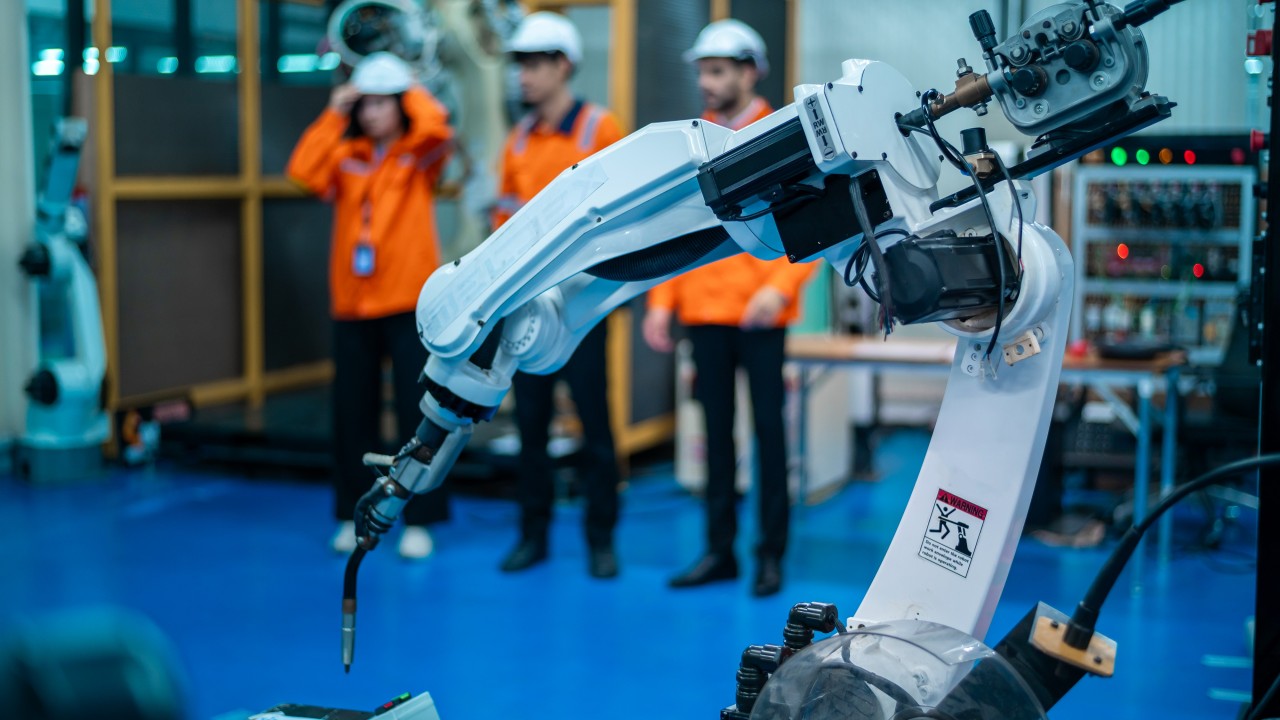
Goodbye Keyboards, Hello Conversations- Is the Future Interface Voice?
Technology is shifting from screens to sound. In a world driven by convenience and speed, voice assistants are redefining how we interact with devices, businesses, and each other. The keyboard is no longer the primary tool for communication- conversations with AI-powered voice assistants are becoming the new norm.
From setting reminders to managing complex tasks, voice assistants like Siri, Alexa, and Google Assistant have already integrated themselves into our daily routines.
However, their capabilities are evolving rapidly. They are no longer passive responders to our commands; they are becoming proactive, predictive, and emotionally aware.
With advances in artificial intelligence (AI), natural language processing (NLP), and deep learning, we are entering an era where speaking to technology will feel as natural as speaking to a human.
But where are we today, and what tools are shaping the next generation of voice-first experiences?
The Rise of Voice Assistants- Where We Are Now
Voice assistants have moved far beyond their initial, limited capabilities. A decade ago, they struggled with understanding accents, natural speech patterns, and complex queries. Today, AI-powered assistants can recognize intent, detect emotions, and provide personalized responses. According to research, over 50% of online searches are now voice-based, and businesses are increasingly integrating voice technology into customer service, retail, and healthcare.
The AI Revolution in Voice Assistants
Google Assistant has set new benchmarks in voice AI by offering real-time conversation flow with contextual understanding. Alexa is expanding its presence in smart homes, seamlessly integrating with IoT devices to control everything from lighting to security systems. Meanwhile, Apple is focusing on privacy-first AI with on-device processing, making Siri faster and more secure.
But the biggest leap forward has been the integration of large language models (LLMs) into voice technology. AI models like GPT-4, Google’s Bard, and Amazon Titan are making voice assistants smarter, capable of holding natural conversations, predicting user needs, and even handling sarcasm. This is a fundamental shift- from assistants that merely respond to queries to those that actively engage in meaningful dialogue.
One of the most groundbreaking applications is in real-time voice transcription and summarization. Tools like Otter.ai and Fireflies.aiare being used in workplaces to automatically transcribe meetings, generate action items, and even analyze sentiment.
The rise of AI-driven voice biometrics is also transforming security, allowing users to log into their banking apps or authenticate transactions simply by speaking.

Game-Changing Innovations in Voice AI
A significant milestone in voice assistant technology came with the introduction of Google Duplex, an advanced feature of Google Assistant designed to manage appointments and reservations. Demonstrations showcased how Google Duplex could make real phone calls to businesses, such as salons and restaurants, on behalf of users. Leveraging deep learning and natural language processing, the Assistant could navigate real-world conversations, handle unexpected responses, and complete bookings autonomously.
Voice assistants have come a long way from their early days of struggling with accents and basic commands. Today, they are more than just virtual helpers- they are intelligent, emotion-aware companions capable of handling complex conversations and anticipating user needs.
A prime example is Sesame AI’s CSM-1B, a billion-parameter engine powering the viral voice assistant Maya. But Maya isn’t alone in this revolution- Google’s Gemini is redefining natural conversations, Amazon’s Alexa Plus is enhancing contextual awareness, and Microsoft’s Copilot Voice is integrating AI-driven audio processing to make interactions more fluid.
As AI grows more intuitive, voice assistants are no longer just digital tools- they are becoming intelligent companions that anticipate needs, provide emotional support, and seamlessly integrate into daily life.
From Otter’s AI Meeting Agent, which understands workplace dynamics, to Alibaba’s Qwen2.5-Omni-7B, which brings multimodal AI to smartphones, the future of voice technology is rapidly unfolding.

Beyond personal use, AI-powered voice assistants are shaping various industries:
- Workplace Productivity: Tools like Otter.ai and Fireflies.ai use voice transcription and summarization to automate meeting notes, generate action items, and analyze sentiment in conversations.
- Finance & Security: AI-driven voice biometrics enable users to log into banking apps and authenticate transactions simply by speaking, enhancing security while eliminating passwords.
- Retail & Customer Service: Virtual assistants in e-commerce and call centers handle customer inquiries, process orders, and provide personalized recommendations using AI-driven voice interactions.
- Healthcare: Voice assistants assist in scheduling appointments, transcribing patient notes, and providing medication reminders, improving efficiency in medical settings.
From smartphones to smart homes and workplaces, voice AI has become an integral part of our digital ecosystem. But what comes next?

The Future of Voice Assistants- What’s Next?
The next wave of advancements in voice AI will push beyond basic command-following into a realm of true conversational intelligence. Future voice assistants won’t just respond to queries; they’ll anticipate user needs, adapt to emotions, and seamlessly integrate into every aspect of life.
Here’s what’s on the horizon:

Emotionally Intelligent AI
Future voice assistants will go beyond recognizing words- they’ll understand tone, sentiment, and emotions. AI will be able to detect stress, fatigue, or excitement in a user’s voice and adjust its responses accordingly. Imagine a digital assistant that suggests a break if it detects frustration during a work session or adjusts its tone to match your mood.
AI-Powered Personalization
With advances in predictive AI, voice assistants will learn and adapt to users’ habits, routines, and preferences:
- Hyper-Personalized Recommendations – From suggesting news articles based on previous conversations to ordering groceries before you even ask, AI will predict what you need before you realize it.
- Context-Aware Responses – Assistants will remember past interactions, allowing for seamless, ongoing conversations instead of treating each query in isolation.
Seamless Multimodal Integration
The rise of multimodal AI (combining text, voice, and vision) will allow voice assistants to interact across different sensory inputs and extend into augmented reality (AR) and virtual reality (VR) platforms.. Innovations in progress include:
- Alibaba’s Qwen2.5-Omni-7B, which blends voice and visual data for more contextual awareness in AI interactions.
- AI assistants that can recognize facial expressions, enhancing emotional intelligence.
- Real-time language adaptation, allowing seamless cross-language communication.
The Rise of Autonomous AI Agents
Voice AI will evolve into fully autonomous digital assistants capable of completing complex tasks independently.
- Google Duplex 2.0? Imagine an AI that not only schedules your appointments but also negotiates pricing, reschedules if conflicts arise, and follows up if needed.
- AI Concierge Services – Future assistants will handle everything from booking vacations to managing home maintenance, offering full-service digital assistance.

Brain-Computer Interface (BCI) Integration
The most futuristic development in voice AI is its potential integration with brain-computer interfaces (BCIs). Companies like Nueralink are exploring how thought-to-speech AI could enable communication without spoken words, paving the way for:
- AI assistants that understand intentions directly from neural signals.
- Hands-free communication for people with disabilities.
- Seamless integration of AI with human cognition, creating a new era of voice-assisted computing.
AI-Powered Voice Biometrics; Security
Security is a growing focus for voice technology. Future voice assistants will incorporate advanced biometrics, allowing for:
- Voiceprint Authentication– Instead of passwords, users will unlock devices and verify transactions using unique voice patterns.
- Edge AI Processing – More on-device processing (like Apple’s Siri) will reduce cloud dependence, keeping conversations private and secure.
- Personalized AI profiles– where each user gets a uniquely tailored experience based on their voice signature.
Integration with Robotics; Smart Homes
Voice assistants will become the central hub for smart homes, workplaces, and even personal robots. We may see:
- AI-driven home automation that adapts to user preferences without needing manual input.
- Personalized robotic assistants are capable of completing household chores, monitoring health, and assisting in caregiving roles.
The Voice Technology Challenge- What Lies Ahead
Although the future appears promising, voice technology needs to get past a few obstacles before reaching every aspect of our daily lives:
Privacy Concerns: Individuals still worry about the safety of their information and how voice interactions are processed and stored.
Accent & Language Barriers: While progress here is improving, the voice assistant’s ability to understand various accents and languages needs to be improved.
Seamless Integration: In creating a truly voice-first future, AI assistants must integrate seamlessly between devices and platforms.
The Future is Conversational
The shift from typing to talking is inevitable. As AI becomes more intelligent, human-like, and proactive, our reliance on traditional interfaces will continue to decrease. The next decade will see voice assistants move from being reactive tools to becoming indispensable digital companions- capable of making recommendations, managing complex tasks, and even engaging in meaningful conversations.
The question may no longer be whether voice technology will replace keyboards. The real question is: Are we ready to embrace this change?
What are your thoughts on a voice-first future? Drop a comment or DM Mike Sorrenti GAME PILL





